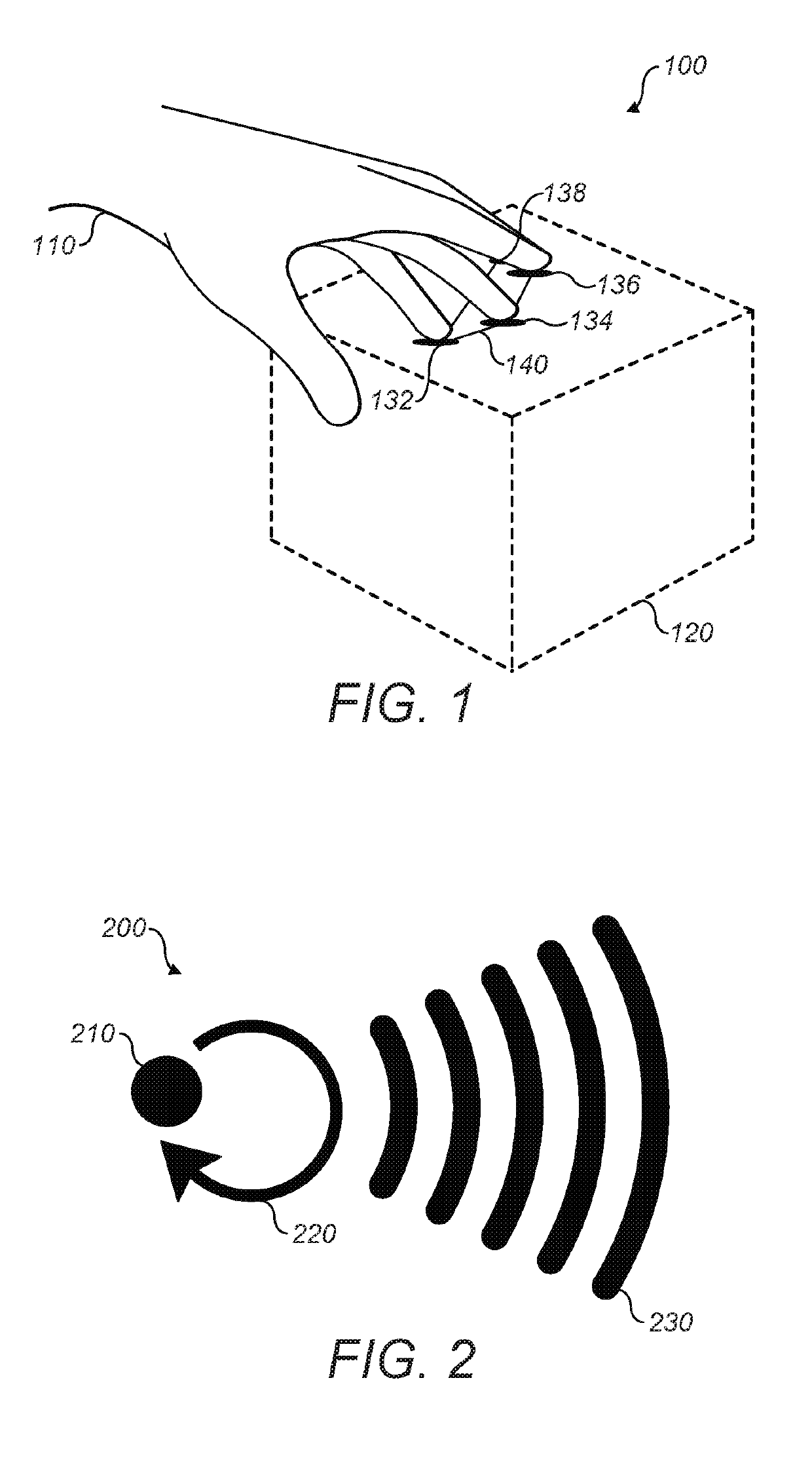Three-dimensional perceptions in haptic systems
a technology of haptic systems and three-dimensional perception, applied in the field of three-dimensional perception in haptic systems, can solve problems such as sudden disturbance, pop or click, and disturbance of air, and achieve the effects of generating disturbances and unwanted side effects
- Summary
- Abstract
- Description
- Claims
- Application Information
AI Technical Summary
Benefits of technology
Problems solved by technology
Method used
Image
Examples
Embodiment Construction
[0019]The solution described herein involving touch and aural interactions with virtual objects has properties that may be used in combination or separately.
[0020]I. Curve Manipulation for 3D-Shape Reproduction
[0021]When a hand intersects the shell of a three dimensional simulated shape, the current solution is to find a closed curve that best represents the intersection that is to be described to the user and actuate that path. Since it is a closed path, the system may use a single control point moving along the path with a given speed (and thus frequency) in order to produce it in mid-air haptics without much noise being created. But this suffers from two important limitations. First, only shapes containing paths that can be conveniently interpreted as closed curved contours may be represented. A shape containing open contours is not as suitable for haptic representation: although the path can be bent back upon itself, this changes the haptic effect. Second, if the constraint of a...
PUM
 Login to View More
Login to View More Abstract
Description
Claims
Application Information
 Login to View More
Login to View More - R&D
- Intellectual Property
- Life Sciences
- Materials
- Tech Scout
- Unparalleled Data Quality
- Higher Quality Content
- 60% Fewer Hallucinations
Browse by: Latest US Patents, China's latest patents, Technical Efficacy Thesaurus, Application Domain, Technology Topic, Popular Technical Reports.
© 2025 PatSnap. All rights reserved.Legal|Privacy policy|Modern Slavery Act Transparency Statement|Sitemap|About US| Contact US: help@patsnap.com

